Portable cabins have become increasingly popular in various industries due to their versatility, convenience, and cost-effectiveness. In this blog post, we will explore what a portable cabin is, its primary characteristics, and its rising popularity across different sectors.
Definition of Portable Cabin and Primary Characteristics:
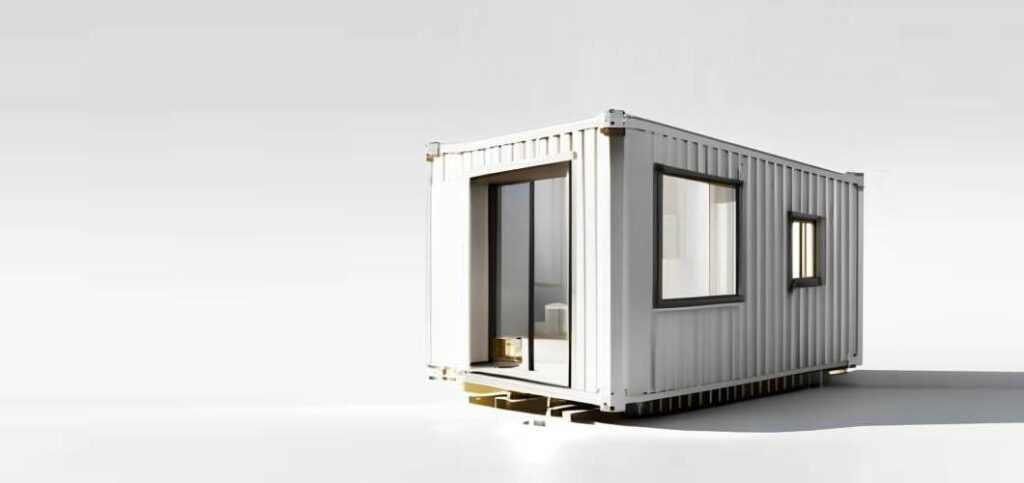
A portable cabin, also known as a prefab cabin or modular cabin, is a transportable and pre-fabricated structure designed for temporary or permanent use. These cabins are typically constructed off-site in a controlled environment and then transported to the desired location, making them highly mobile and easy to install. Their primary characteristics include:
- Mobility: Portable cabins can be easily transported from one location to another, making them suitable for various applications and temporary requirements.
- Customization: They offer a range of design options, allowing for personalized layouts, sizes, and features to meet specific needs.
- Quick Installation: As pre-fabricated structures, portable cabins can be set up rapidly, minimizing downtime and disruptions.
- Cost-effectiveness: Compared to traditional buildings, portable cabins offer a more affordable solution, saving both time and money.
- Durability: Constructed with sturdy materials, these cabins can withstand various weather conditions and are built to last.
Rising Popularity of Portable Cabins in Various Industries:
Portable cabins have gained immense popularity in different industries due to their adaptability and practicality. They are being widely used in the following sectors:
- Construction: Portable cabins serve as on-site offices, storage facilities, and accommodation for construction workers.
- Education: They are utilized as classrooms, laboratories, and administrative offices in schools and universities, especially in remote areas.
- Hospitality: In the tourism industry, portable cabins are employed as eco-friendly lodgings, glamping sites, and pop-up accommodation for events.
- Healthcare: They offer quick and accessible solutions for medical facilities, clinics, and emergency centers.
- Retail and Commercial: Portable cabins are used as pop-up shops, kiosks, and mobile showrooms.
- Disaster Relief: During emergencies, these cabins provide temporary housing and support facilities for affected communities.
What are Potable Cabins
Portable cabins, also known as prefab cabins or modular cabins, are prefabricated structures designed to be easily transported and installed at different locations. The concept revolves around constructing these cabins in a controlled environment off-site, ensuring efficiency and quality. Once the fabrication is complete, they are transported to the desired location where they can be swiftly assembled and set up. This flexibility allows for temporary or permanent usage based on specific needs, making them a versatile and convenient solution for various applications.
Construction Materials Used for Portable Cabins:
The construction of portable cabins involves the use of durable and lightweight materials to ensure both structural integrity and easy transportation. Some common materials used include:
-
Steel: Steel is a popular choice for the framework of portable cabins due to its strength, durability, and ability to withstand various environmental conditions.
-
Wood: Wooden panels are frequently used for interior finishes and cladding due to their aesthetic appeal and insulation properties.
-
Aluminum: For components requiring a lightweight yet sturdy solution, aluminum is employed, especially in door frames and windows.
-
Insulation Materials: To ensure energy efficiency and temperature control, insulation materials like fiberglass, foam, or rockwool are utilized.
-
Flooring: Various options such as plywood, vinyl, or laminated flooring are used for a comfortable and functional interior.
Mobility and Ease of Transportation:
One of the key advantages of portable cabins is their mobility and ease of transportation. These cabins are designed in sections or modules, allowing them to be easily disassembled and transported to different locations using trucks or trailers. The lightweight materials used in their construction contribute to their transportability, enabling them to be relocated without the need for heavy machinery.
The modular design also facilitates quick and straightforward assembly at the destination site, reducing downtime and labor costs. As a result, portable cabins are an ideal solution for temporary projects, remote areas, and situations requiring rapid deployment, such as disaster relief efforts or construction sites.
Overall, the concept of portable cabins, combined with the choice of appropriate construction materials, ensures both flexibility in usage and ease of transportation, making them a practical and efficient solution for a wide range of applications. Whether for temporary accommodations, onsite offices, classrooms, or commercial spaces, portable cabins offer a cost-effective and adaptable alternative to traditional construction methods.
Diverse Applications of Portable Cabins in Different Sectors:
1. Construction Sites:
Portable cabins play a crucial role in construction sites as on-site offices and meeting rooms. They serve as a hub for project management, providing a comfortable workspace for project managers, engineers, and administrative staff. These cabins are equipped with amenities such as air conditioning, lighting, and furniture, enabling efficient coordination and decision-making.
Real-life Example: A construction company utilized portable cabins as site offices during the construction of a large infrastructure project. The cabins served as a centralized workspace, facilitating effective communication among team members and ensuring smooth project execution.
2. Offices and Commercial Spaces:
In the corporate sector, portable cabins are gaining popularity as office spaces, especially for start-ups and small businesses. They offer a cost-effective alternative to traditional office spaces and can be easily expanded or relocated as the business grows.
Real-life Example: A tech start-up opted for portable cabins as their office space. The modular design allowed them to add more cabins as their team expanded, while the ease of transportation allowed them to relocate their office to a more strategic location.
3. Classrooms and Educational Facilities:
Portable cabins are widely used in the education sector to address space constraints and accommodate increasing student numbers. They are utilized as temporary classrooms, libraries, laboratories, and administrative offices in schools and universities.
Real-life Example: A school facing overcrowding issues implemented portable cabins as additional classrooms. The cabins provided a comfortable and functional learning environment, ensuring a smooth academic year for both students and teachers.
4. Healthcare and Medical Facilities:
In the healthcare sector, portable cabins serve as medical clinics, diagnostic centers, and vaccination stations. They are valuable in remote areas and during emergency situations, offering easy access to healthcare services.
Real-life Example: A mobile medical unit utilized portable cabins as examination rooms to provide medical services in underserved communities. The mobility of the cabins enabled them to reach areas with limited healthcare infrastructure.
5. Accommodation and Hospitality:
Portable cabins are transforming the hospitality industry, offering unique lodging experiences such as glamping sites, eco-resorts, and pop-up hotels. These cabins provide eco-friendly and off-grid accommodations in scenic locations.
Real-life Example: An eco-resort used portable cabins as eco-friendly cottages for guests seeking sustainable and nature-immersive experiences. The cabins blended seamlessly with the natural surroundings, attracting eco-conscious travelers.
6. Disaster Relief and Emergency Response:
During natural disasters or emergencies, portable cabins serve as temporary shelters, first-aid centers, and relief distribution points, offering immediate support to affected communities.
Real-life Example: After a devastating flood, portable cabins were deployed as temporary shelters for displaced families. The quick installation and mobility of the cabins helped provide immediate relief to those in need.
The diverse applications of portable cabins across different sectors demonstrate their adaptability and practicality in meeting various needs. From construction sites to educational institutions and beyond, these versatile structures have proven to be a valuable asset in enhancing efficiency, addressing space constraints, and providing timely solutions in various industries.
Benefits of Choosing Portable Cabins Over Traditional Buildings:
-
Cost-effectiveness: Portable cabins offer significant cost savings compared to constructing traditional buildings. The prefabricated nature of these cabins reduces labor and construction time, resulting in lower overall expenses. Additionally, the materials used in portable cabins are often more affordable, making them an economical choice for various projects.
-
Quick Installation: Unlike traditional buildings that may take months to complete, portable cabins can be installed within a matter of days. The off-site fabrication and modular design allow for rapid assembly, reducing downtime and enabling businesses to start operations promptly.
-
Eco-friendliness: Portable cabins are considered eco-friendly due to their efficient use of resources. The controlled environment in which they are constructed minimizes material waste, while the shorter construction time reduces the carbon footprint associated with the building process. Furthermore, these cabins can be easily dismantled and reused, making them a sustainable option.
-
Flexibility of Design: Portable cabins offer a high degree of flexibility in design. They can be tailored to meet specific requirements, such as size, layout, and interior features. Whether used as offices, classrooms, or living spaces, their design can be customized to suit the unique needs of each application.
-
Customization Options: The customization options for portable cabins extend beyond design and layout. Clients can choose from a range of features and amenities, such as insulation, HVAC systems, windows, and flooring. This level of customization ensures that the cabin meets the desired functionality and comfort standards.
-
Mobility and Reusability: Portable cabins are designed for mobility, allowing them to be easily transported to different locations. This mobility makes them ideal for temporary projects, event spaces, or emergency response situations. Moreover, if the need arises to relocate, these cabins can be dismantled, transported, and reassembled at the new site, making them a reusable resource.
-
Minimal Site Disruption: The installation of portable cabins involves minimal disruption to the surrounding environment. Their modular construction ensures that site disturbances, such as excavation and heavy machinery usage, are minimized. This benefit is particularly valuable for projects in environmentally sensitive areas or where site disturbances must be kept to a minimum.
-
Reduced Project Timelines: By choosing portable cabins, project timelines can be significantly reduced. This is particularly advantageous in scenarios where time-sensitive operations are required, such as disaster relief efforts, urgent accommodation needs, or rapidly growing businesses.
Overall, the benefits of opting for portable cabins over traditional buildings include cost-effectiveness, quick installation, eco-friendliness, and design flexibility. These advantages have made portable cabins a popular choice in various industries, offering a practical and efficient solution for a wide range of applications.
Factors to Consider When Choosing Portable Cabins:
-
Size and Layout:
- Determine the required size of the portable cabin based on the intended use and available space.
- Consider the layout and interior configuration to ensure it meets your specific needs and accommodates essential amenities.
-
Insulation and Climate Control:
- Check for proper insulation to ensure the cabin remains comfortable and energy-efficient, regardless of the external weather conditions.
- Verify the presence of HVAC systems or ventilation options for adequate climate control.
-
Material Quality:
- Assess the quality of materials used in the construction of the portable cabin, including the frame, walls, and roofing.
- Opt for durable materials that can withstand varying environmental conditions and ensure long-lasting performance.
-
Customization Options:
- Look for suppliers offering customization options in terms of design, features, and finishes to tailor the cabin to your exact requirements.
-
Compliance with Building Codes:
- Ensure that the portable cabin complies with local building codes and regulations to avoid legal issues and ensure safety standards.
-
Mobility and Transportability:
- Consider the ease of transportation and installation, especially if you require the cabin to be relocated in the future.
-
Environmental Impact:
- Choose eco-friendly materials and construction methods to minimize the cabin’s environmental footprint.
-
Warranty and After-Sales Support:
- Inquire about the warranty offered by the supplier and the availability of after-sales support for maintenance and repairs.
Finding Reliable Suppliers and Manufacturers:
-
Research and Reviews:
- Conduct thorough research to identify reputable suppliers and manufacturers with a proven track record.
- Read customer reviews and testimonials to gauge the quality of their products and services.
-
Quality Assurance:
- Look for suppliers that adhere to stringent quality control measures and certifications, ensuring the cabins meet industry standards.
-
Experience and Expertise:
- Choose suppliers with extensive experience in the portable cabin industry, as they are more likely to deliver reliable products.
-
Portfolio and Past Projects:
- Review the supplier’s portfolio and past projects to assess their expertise and the diversity of their offerings.
-
Customer Support:
- Evaluate the level of customer support provided by the supplier, including response times and willingness to address inquiries.
-
Price and Value:
- Compare prices from different suppliers, but prioritize value over the lowest cost, considering factors like quality, features, and customization options.
-
References:
- Request references from the supplier to connect with previous clients and gain insights into their overall satisfaction.
By considering these factors and conducting thorough research, individuals can make informed decisions and select the right portable cabin that best meets their needs and requirements.
Installation of a Portable Cabin:
Step 1: Site Preparation
- Choose a level and stable surface for the installation of the portable cabin.
- Ensure the area is free from obstacles and complies with local building regulations.
Step 2: Delivery and Placement
- The supplier will transport the portable cabin to the site using suitable equipment.
- Carefully position the cabin on the prepared surface, using cranes or trailers as needed.
Step 3: Foundation and Anchoring
- If required, install a concrete foundation or anchoring system to secure the cabin.
- This step is crucial for stability and safety, especially in areas prone to high winds or seismic activity.
Step 4: Utilities Connection
- Connect the cabin to necessary utilities, such as electricity, water, and sewage systems.
- Ensure proper wiring and plumbing for efficient functionality.
Step 5: Interior Setup
- Arrange the interior according to the pre-determined layout and design.
- Install furniture, fixtures, and equipment as needed for the intended use.
Maintenance and Longevity Tips:
-
Regular Cleaning:
- Clean the cabin’s interior and exterior regularly to prevent the buildup of dirt and debris.
- Use appropriate cleaning agents and methods to avoid damage to surfaces.
-
Inspect for Damage:
- Conduct routine inspections to identify any signs of wear, tear, or damage.
- Address issues promptly to prevent further deterioration.
-
Weatherproofing:
- Ensure proper weatherproofing by sealing joints, repairing leaks, and replacing damaged seals.
- Protect the cabin from extreme weather conditions to prolong its lifespan.
-
HVAC Maintenance:
- Regularly service the heating, ventilation, and air conditioning systems to maintain their efficiency.
- Proper HVAC maintenance ensures a comfortable interior environment.
-
Structural Integrity:
- Monitor the cabin’s structural integrity and foundation regularly.
- Address any issues with the foundation or anchoring to maintain stability.
Safety Measures:
-
Load Distribution:
- Be mindful of load distribution inside the cabin to prevent overloading and imbalance.
- Follow the manufacturer’s guidelines for weight limits and load capacity.
-
Fire Safety:
- Install fire extinguishers and smoke detectors inside the cabin.
- Educate occupants on fire safety protocols and evacuation procedures.
-
Electrical Safety:
- Ensure proper electrical connections and grounding to prevent electrical hazards.
- Hire a qualified electrician for any electrical work or modifications.
-
Ventilation:
- Maintain proper ventilation to prevent indoor air quality issues and ensure a comfortable environment.
-
Locking and Security:
- Secure the cabin with sturdy locks and consider installing security systems if needed.
- Protect valuable assets and equipment within the cabin.
By following these installation, maintenance, and safety guidelines, users can ensure the successful setup, longevity, and safe usage of their portable cabins, making them reliable and functional assets for various applications.
Innovations and Trends in Portable Cabins:
-
Smart Designs:
- Modern portable cabins feature smart designs that optimize space and functionality.
- Customizable layouts and modular components enable versatile usage in various industries.
-
Energy Efficiency:
- Energy-efficient materials and construction techniques contribute to reduced energy consumption.
- Integration of solar panels and energy-efficient HVAC systems further enhances sustainability.
-
Eco-Friendly Materials:
- The use of eco-friendly and recyclable materials aligns with the growing focus on environmental sustainability.
- Green building practices ensure minimal impact on the environment.
-
Off-Grid Capabilities:
- Some portable cabins are equipped with off-grid capabilities, allowing them to operate independently of traditional utilities.
- This feature is especially valuable in remote locations or during emergencies.
-
High-Tech Insulation:
- Advancements in insulation technologies improve thermal efficiency and maintain a comfortable interior climate.
- Advanced insulation materials reduce heating and cooling costs.
-
Smart Automation:
- Automation technologies enable remote control of various cabin features, enhancing convenience and energy management.
- Automated lighting, temperature control, and security systems are becoming more common.
-
Internet of Things (IoT) Integration:
- IoT integration allows for remote monitoring and management of portable cabins’ systems and conditions.
- Real-time data collection and analysis improve efficiency and maintenance.
-
Mobility Enhancements:
- Enhanced mobility features, such as foldable and stackable designs, ease transportation and storage.
- Innovative transportation methods, such as modular units, facilitate easy relocation.
Future Prospects and Potential Developments:
-
3D Printing:
- The integration of 3D printing technology in portable cabin manufacturing may revolutionize the construction process.
- Customization and on-site printing could lead to faster and more efficient production.
-
Nanotechnology:
- Advancements in nanotechnology may improve insulation and weatherproofing capabilities, enhancing energy efficiency.
- Nanomaterials could also increase the strength and durability of portable cabins.
-
Augmented Reality (AR) in Design:
- AR could play a role in designing and visualizing portable cabins, allowing for better client interaction and customization.
- It could streamline the design process and accelerate decision-making.
-
Sustainable Power Solutions:
- Future portable cabins may integrate innovative renewable energy solutions, such as kinetic energy harvesting and biodegradable energy storage.
- These advancements will further reduce their environmental impact.
-
Smart AI Integration:
- Artificial Intelligence (AI) could be integrated into portable cabins to optimize energy consumption based on occupancy and weather conditions.
- AI-powered systems could enhance cabin performance and occupants’ comfort.
As technology continues to evolve, portable cabins are poised to become more sustainable, efficient, and intelligent. These innovations cater to the increasing demand for flexible and eco-friendly solutions across various industries. Embracing these advancements will lead to a new era of portable cabins with improved functionality and a reduced environmental footprint.
Conclusion
Portable cabins prove their versatility and offer an array of benefits in various industries. With smart designs, energy efficiency, and eco-friendly features, they have become a compelling choice for different applications. From construction sites to offices and classrooms, their mobility and cost-effectiveness make them a practical solution.
Embracing portable cabins opens doors to endless possibilities and advantages. Their customizable designs and technological advancements ensure tailored solutions for specific needs. As the industry advances, the future holds even more promising developments in sustainability and efficiency.
If you seek flexible, efficient, and sustainable alternatives, consider exploring the benefits of portable cabins. Whether for temporary projects, emergencies, or long-term usage, they offer reliable and practical solutions. Take the next step and integrate portable cabins into your projects or operations to experience their convenience and ingenuity.
Do not miss the chance to enhance your endeavors with portable cabins. Connect with reputable suppliers and manufacturers to find the ideal cabin that aligns with your requirements. Embrace the future of construction and operations by incorporating portable cabins today.
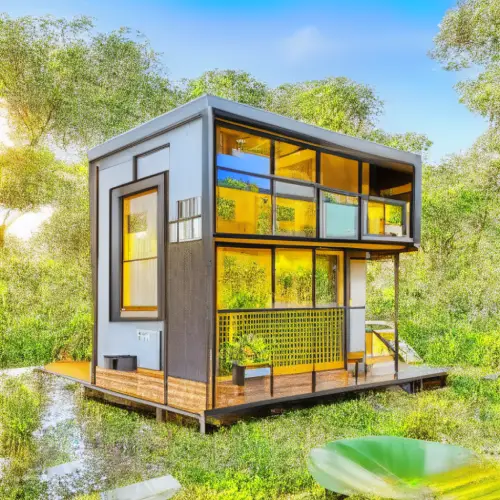
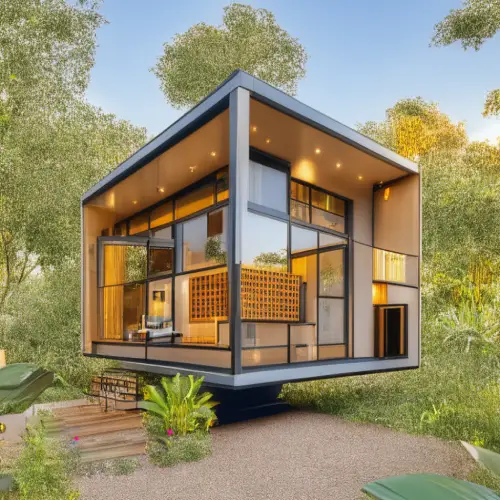
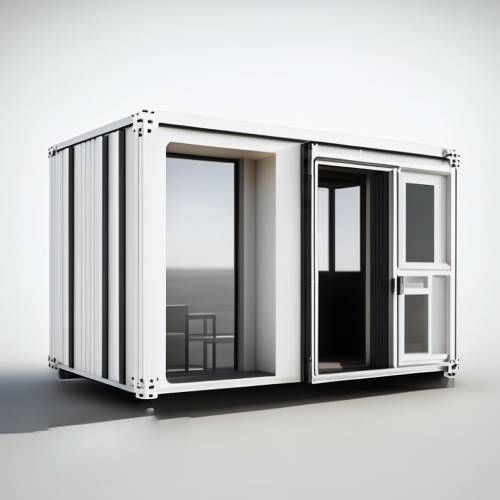
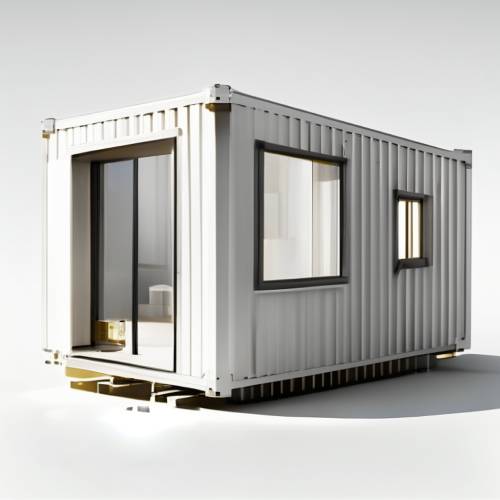
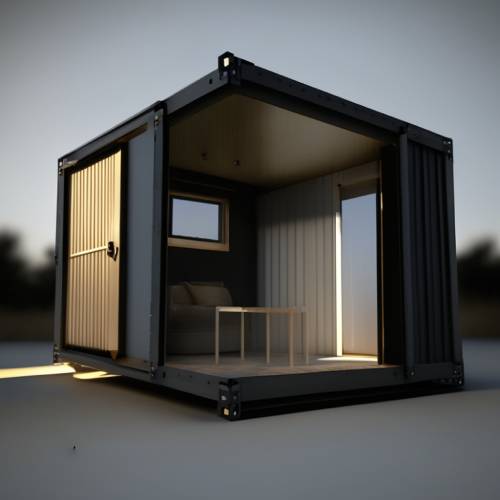
Unlock Versatility: Find Your Perfect Portable Cabin Today!
Are you in need of a versatile and efficient portable cabin solution? Look no further! Our team of experts is here to assist you in finding the perfect portable cabin that meets your requirements. Whether it’s for construction sites, temporary offices, events, or any other purpose, we have a wide range of options to choose from. Don’t miss out on the convenience and flexibility that our portable cabins offer. Get in touch with us now to explore the best solutions tailored to your needs!

